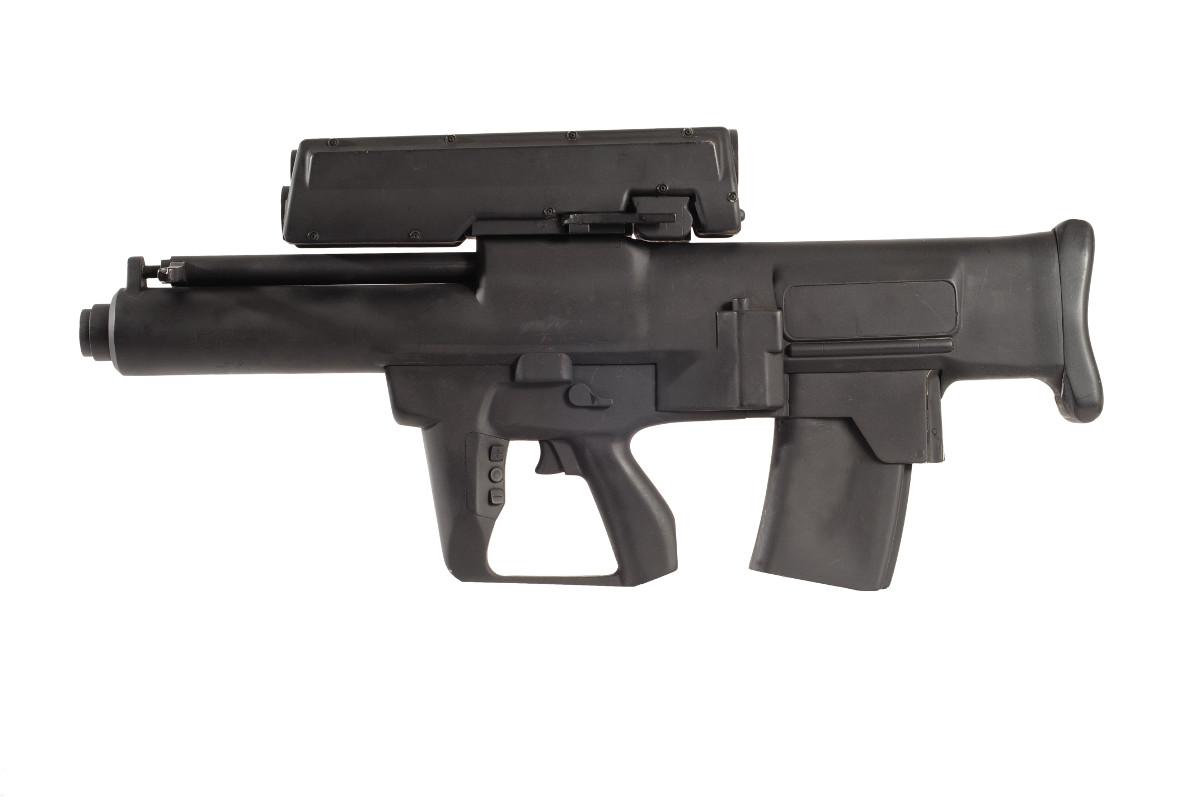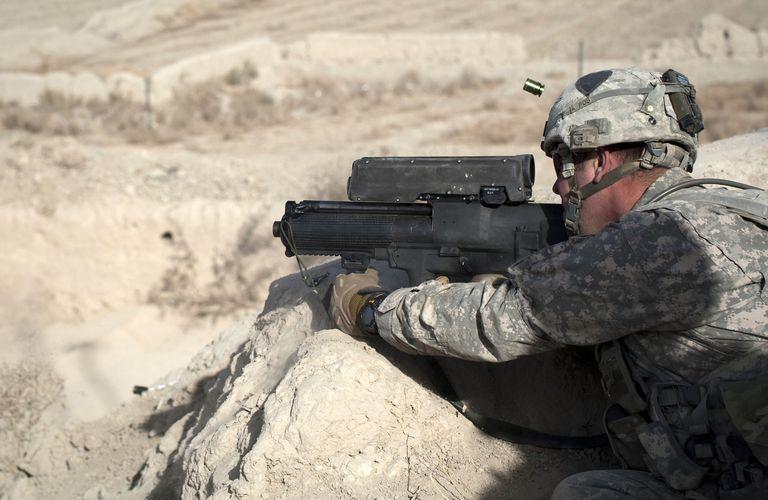The years of development have finally ended as the U.S. Army is ready to introduce the XM25 CTDE grenade launcher. A new shoulder-fired grenade designated as the XM25 Counter-Defilade Target Engagement System (CTDE) is a semi-automatic grenade launcher designated to fire ‘smart’ grenades, set to explode in mid-air or near a target, peppering enemy fighters with shrapnel.
Design
Since the dawn of the firearm age, one of the biggest obstacles to hitting people with a bullet was the cover they could hide behind. A soldier can hide inside a doorway, or window sill, or even a bunker, exposing himself just long enough to shoot back. Getting at that soldier requires good marksmanship and timing, outmaneuvering him, or simply blowing up the building.
The XM25 Punisher was designed to make the cover obsolete. The Punisher is a semi-automatic 25-millimeter grenade launcher that fires programmable grenades. The user can program grenades to fly inside the doorway and explode just inside, peppering anyone there with lethal shrapnel. It could also do the same with windows and bunkers and can be programmed to explode above trenches and foxholes.

The box-shaped XM25 is equipped with various gadgets, including a laser range finder and a grenade that can be adjusted to detonate at a range of up to 10 feet or more. The Pentagon has secured funds for more than 100 of these grenade launchers for the U.S. Army.
Testings
The U.S. Army has prioritized the XM25 as its “number one material solution to mitigate a critical capability gap” for dismounted soldiers in combat. It is officially kicking off the program in its fiscal year 2017 (F.Y. 2017) budget request, including 105.
“[The] army has requested $9.764 million in FY 2017 for the program and hopes for $14.852 million in FY 2018, $24.930 million in FY 2019, $32.158 million in FY 2020, and $25.798 million in FY 2021,” IHS Jane’s defense weekly reported.”
The XM25 is a semi-automatic weapon that gives the user a 300 to 500 percent boost in hit probability.
“The XM25 is designed for effectiveness against enemies protected by walls, dug into foxholes or hidden in hard-to-reach places, the weapon features revolutionary high-explosive, airburst ammunition programmed by the weapon’s target acquisition/fire control system (TA/FC),” according to the website of Orbital ATK, the produced of the XM25.”
The U.S. Army has already finished testings of the XM25 grenade launcher. It was tested during 14 months of battlefield combat in Afghanistan. The U.S. Army 101st Airborne Division began field testing in 2010, with five weapons and 1,000 hand-made air-burst rounds, which led to further testings and final approval for the first standard-issue grenade launchers.
Limited service
The XM-25 saw limited active service, but it had a tepid reception among the troops. The weapon was heavy, with a basic load and 36 grenades weighing a whopping 35 pounds. It was only helpful under certain circumstances and was not beneficial in close combat. In 2013, a Ranger unit in Afghanistan refused to take along the weapon, preferring to take an M4 instead.
The weapon was pulled in 2013 after an incident in which a soldier was injured when the weapon tried to load two grenades at once. The weapon was redesigned, and after three years, the $41,000 weapon reemerged with a $93,000 price tag. That’s $90,000 more than a fully tricked-out M4A1 carbine.
Termination
In August 2018 U.S. Army announced that they had officially terminated the XM25 Punisher project. The XM25 Counter Defilade Target Engagement System (CDTE) was designed to engage enemy troops behind cover. While successful, the high-tech infantry weapon was the victim of a lengthy development period, ballooning costs, a perceived lack of utility, and a 2013 incident that wounded a soldier carrying it.




Short sighted development thinking that applies to many other weapons. The M202 multiple tube rocket launcher was also discontinued for similar reasoning. It was conceived as a replacement for the M1-M2 flamethrower units but was discontinued or shelved for fear the flame rockets would explode inside the tube(s). Disregarding the use with fragmentation, HE , WP, smoke, AP, practice and other munitions that are possible in this type of launch tube. Even more sophisticated warheads are now possible even similar to the XM25 rounds in the larger diameter M202 rockets.